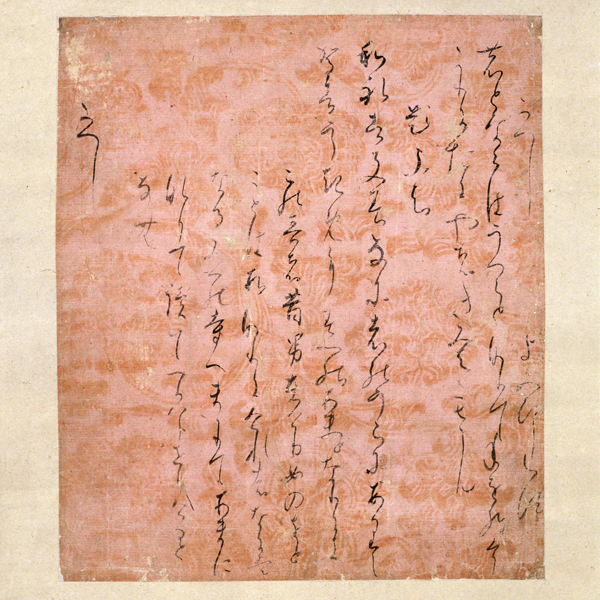The Arts of the Imperial Court | 8th–16th century
-

Part of Collection of Japanese Poems Ancient and Modern (Handscroll Version), By Fujiwara no Sadazane, Heian period, 12th century (Gift of Mrs. Morita Chikka)
Japanese Gallery (Honkan) Room 3
October 31, 2023 (Tue) - December 3, 2023 (Sun)After emulating China for generations, the imperial court began to develop its own cultural identity around the 10th century. This movement was led by the court nobility serving the emperor. The body of work they produced — literature, calligraphy, painting, and elegantly decorated items for daily use — became one of Japan’s cultural foundations.
Even after the samurai gained more political power than the court in the 12th century, the court remained the home of high culture for centuries. The different art forms of the court were closely related, with literature playing a central role. Previously the nobility wrote in Chinese, but the creation of a new writing system (kana) helped Japanese literature to flourish. Both noblemen and noblewomen wrote some of Japan’s most celebrated poetry and stories, including by the court lady Murasaki Shikibu. Scenes from literature were also shown in paintings and on furnishings, which the nobility commissioned for their mansions.
| Designation | Name | Creation/ Excavation/ Provenance |
Period | Acquisition/ Ownership/ Accession Number |
CMT | ||
| Highlight | Part of "Collection of Myriad Leaves" (Indigo-Dyed Paper Version) | By Fujiwara no Korefusa (1030–69) | Heian period, 11th century | B-2450 | |||
| Part of "Collection of Japanese Poems Ancient and Modern" (Handscroll Version) | By Fujiwara no Sadazane (before 1077–after 1119) | Heian period, 12th century | Gift of Mrs. Morita Chikka, B-2992 | ||||
| Highlight | Mirror with a Scene of Mount Penglai | Kamakura period, 13th century | E-19965 |
